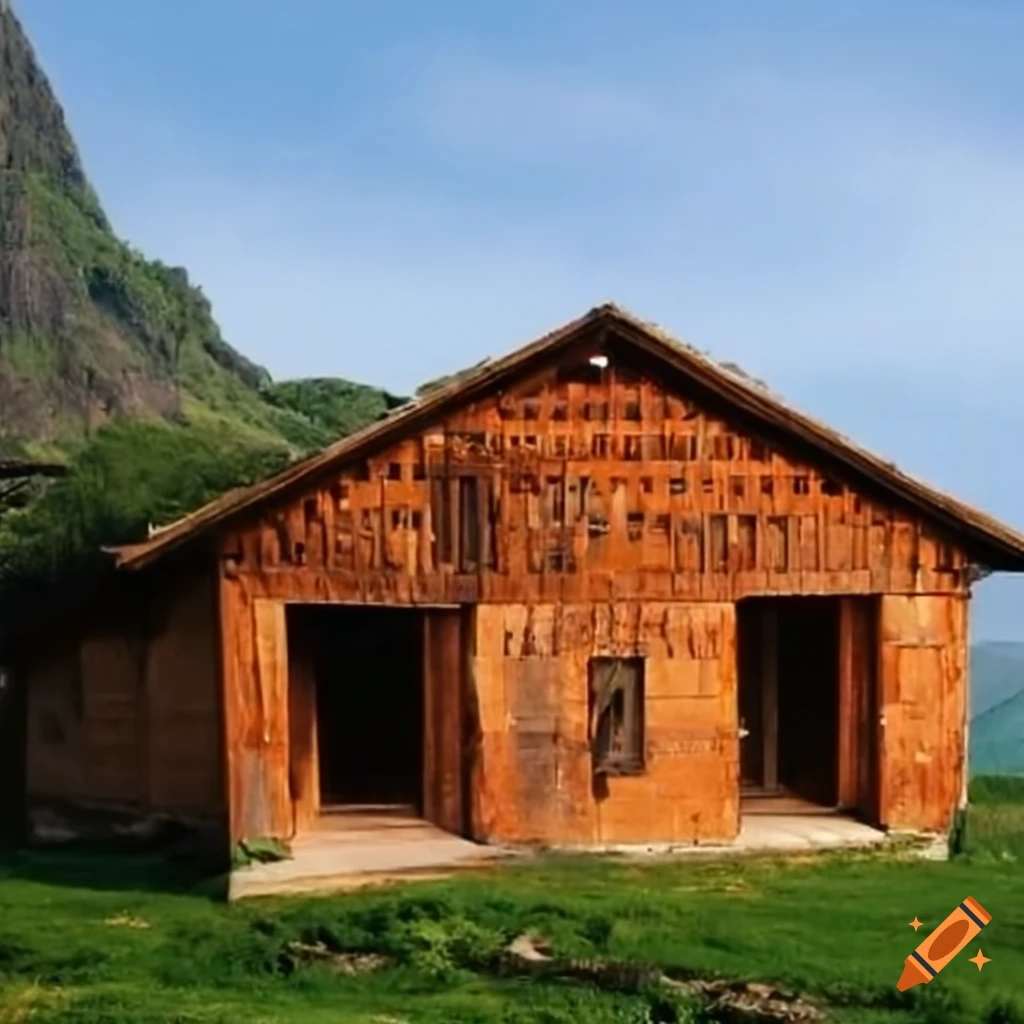Introduction to Thrilling Adventures
Thrilling adventures captivate the human spirit, offering a unique blend of excitement and challenge that resonates deeply with our innate sense of adventure. These experiences, often characterized by their adrenaline-pumping nature, provide a profound way to break free from the mundane routine of daily life. Engaging in thrilling adventures allows us to step out of our comfort zones, confront our fears, and achieve a sense of accomplishment that is both invigorating and transformative.
One of the primary appeals of thrilling adventures is their ability to push personal boundaries. Whether it’s scaling a towering mountain peak, diving into the depths of the ocean, or navigating through a dense, uncharted forest, these activities demand courage and resilience. In overcoming these challenges, individuals often find a newfound confidence and a heightened sense of self-awareness. Moreover, thrilling adventures often require a combination of physical exertion and mental acuity, contributing significantly to both physical fitness and mental well-being.
Beyond the personal growth and health benefits, thrilling adventures also offer a unique window into different cultures and environments. Adventure travel can take us to the most remote and breathtaking corners of the world, from the icy expanses of the Arctic to the lush rainforests of the Amazon. In these settings, we can immerse ourselves in local customs, traditions, and natural beauty, fostering a deeper appreciation for the diversity and richness of our planet.
This blog post will delve into a variety of thrilling adventures that promise to ignite your sense of adventure. We will explore activities such as skydiving, white-water rafting, mountain biking, and more, each offering its own unique challenges and rewards. Whether you are an experienced thrill-seeker or someone looking to embark on your first adventure, there is something here for everyone. Get ready to discover the exhilarating world of thrilling adventures and the countless ways they can enrich your life.
Skydiving: Defying Gravity
Skydiving offers an unparalleled adrenaline rush, capturing the essence of thrill-seeking adventure. As you leap from an aircraft thousands of feet above ground, the initial sensation of free fall is both exhilarating and surreal. The sheer speed at which you plummet towards the earth, combined with the roaring wind, creates an unforgettable experience that is both liberating and awe-inspiring.
One of the most captivating aspects of skydiving is the breathtaking panorama that unfolds before your eyes as you descend. Locations such as Dubai present an unmatched view of the Palm Jumeirah and the vast Arabian Desert. In Switzerland, skydivers are treated to the majestic sight of the Swiss Alps, while New Zealand offers stunning vistas of its diverse landscapes, from rugged mountains to serene lakes.
Before embarking on this thrilling adventure, safety is paramount. Comprehensive training sessions are mandatory, where first-timers learn the critical aspects of skydiving, including proper body positioning, parachute deployment, and emergency procedures. Most skydiving experiences involve tandem jumps, where novices are securely harnessed to experienced instructors who manage the technicalities of the dive, ensuring a safe and enjoyable descent.
For those new to skydiving, the process begins with a detailed briefing on safety protocols and a thorough review of the equipment. Once airborne, the anticipation builds as you ascend to the designated altitude, often ranging from 10,000 to 15,000 feet. As the aircraft door opens, the rush of cold air and the distant ground below can be both daunting and exhilarating. The free fall typically lasts around 60 seconds before the parachute is deployed, allowing for a serene canopy flight that lasts several minutes, culminating in a gentle landing.
Skydiving is more than just a sport; it’s a transformative experience that challenges your limits and offers a new perspective on the world. Whether you are seeking the thrill of free fall or the serenity of gliding through the air, skydiving promises an adventure that is both exhilarating and unforgettable.
Scuba Diving: Exploring the Underwater World
Scuba diving offers a gateway to the mesmerizing underwater world, inviting adventurers to explore vibrant marine life, intricate coral reefs, and historic shipwrecks. The thrill of descending into the ocean’s depths and encountering diverse aquatic species makes scuba diving an unparalleled adventure. Iconic diving destinations like Australia’s Great Barrier Reef, Belize’s Blue Hole, and Egypt’s Red Sea provide some of the most breathtaking underwater landscapes on the planet.
The Great Barrier Reef, a UNESCO World Heritage site, is renowned for its extensive coral formations and rich biodiversity, making it a must-visit for any diving enthusiast. Equally captivating, the Blue Hole in Belize is a natural wonder that offers a unique diving experience with its deep blue waters and impressive limestone formations. The Red Sea, with its clear waters and abundant marine life, including sharks and colorful fish, is another top destination that promises an unforgettable underwater adventure.
For those new to scuba diving, obtaining the necessary certifications is essential. The most recognized certification bodies are PADI (Professional Association of Diving Instructors) and NAUI (National Association of Underwater Instructors). These organizations offer courses that cover fundamental skills, safety procedures, and the use of diving equipment. Beginners typically start with the Open Water Diver course, which includes both theoretical and practical training, ensuring they are well-prepared for underwater exploration.
Equipping oneself with the right gear is crucial for a safe and enjoyable dive. Essential equipment includes a mask, snorkel, fins, a buoyancy control device (BCD), a regulator, and a wetsuit or drysuit depending on the water temperature. Additionally, diving computers and underwater cameras can enhance the diving experience by providing important data and capturing the beauty of the underwater world.
Safety precautions are paramount in scuba diving. Divers should always dive with a buddy, adhere to depth limits, and monitor their air supply. Understanding and respecting marine life, as well as maintaining buoyancy control, are vital for both personal safety and environmental conservation. With the right preparation, scuba diving can be a thrilling and safe adventure that opens up a whole new world beneath the waves.
Bungee Jumping: The Ultimate Leap of Faith
Bungee jumping stands as one of the most exhilarating activities for thrill-seekers. It offers a unique blend of fear and excitement, where participants leap off towering heights, tethered only by an elastic cord. The initial moments before the jump are often filled with intense anticipation, heart-pounding fear, and a rush of adrenaline. As one plummets towards the ground, the sensation of weightlessness takes over, culminating in an unparalleled sense of freedom and exhilaration.
Renowned bungee jumping locations around the world attract adrenaline enthusiasts. The Macau Tower in China is a prime spot, boasting a jump from a staggering height of 233 meters. It’s known for providing an intense, heart-stopping experience. The Victoria Falls Bridge, straddling the border between Zambia and Zimbabwe, offers not only a thrilling jump but also breathtaking views of the falls, making it a visually spectacular adventure. The Kawarau Bridge in New Zealand holds historical significance as the birthplace of commercial bungee jumping, attracting thousands of enthusiasts each year who seek to experience the jump that started it all.
Safety is paramount in bungee jumping. Operators adhere to stringent protocols to ensure the well-being of participants. The equipment used in bungee jumping includes a body harness, ankle harness, and the bungee cord itself, which is meticulously inspected for any signs of wear and tear. Professional operators conduct thorough safety checks, including verifying the weight of the jumper and adjusting the cord length accordingly. Detailed briefings are provided to participants to ensure they are well-prepared for the jump. Additionally, most operators have contingency plans in place to handle emergencies, further ensuring a safe and controlled environment for this adrenaline-pumping adventure.
White-Water Rafting: Conquering the Rapids
White-water rafting is an exhilarating adventure that promises both thrills and an unforgettable experience. This activity involves navigating through turbulent rapids using an inflatable raft, often requiring teamwork, skill, and a sense of daring. The sheer excitement comes from the unpredictability of the water and the challenge of maneuvering through fast-flowing currents and rocky obstacles.
One of the premier destinations for white-water rafting is the Colorado River in the USA. Known for its dramatic canyons and powerful rapids, the Colorado River offers a range of experiences from gentle float trips to adrenaline-pumping Class V rapids. Similarly, the Zambezi River in Africa is famous for its intense rapids just below the iconic Victoria Falls. This river provides a dramatic backdrop with its deep gorges and powerful water flows, making it a must-visit for seasoned rafters. The Ganges River in India also offers a unique rafting experience, combining the thrill of the rapids with the spiritual atmosphere of the region.
Rapids are classified into six different classes, ranging from Class I, which are easy and gentle waters suitable for beginners, to Class VI, which are considered extremely dangerous and often unnavigable. Understanding these classifications is crucial for rafters to assess the level of difficulty they are comfortable with. Safety is paramount in white-water rafting, and participants must wear life jackets, helmets, and sometimes wetsuits, depending on the water temperature and conditions. Guides play a vital role in ensuring safety, providing instructions, and making real-time decisions to navigate the rapids successfully.
Teamwork is another essential component of white-water rafting. Each member of the team must paddle in sync, listen to commands from the guide, and work together to steer the raft through the rapids. The camaraderie and shared experience of conquering the rapids create a strong bond among participants, making white-water rafting not just a thrilling adventure, but also a memorable and collaborative endeavor.
Mountain Climbing: Reaching New Heights
Mountain climbing is an exhilarating pursuit that tests both physical and mental endurance to their limits. The challenge of scaling formidable peaks like Mount Everest, Kilimanjaro, and the Matterhorn offers a unique sense of achievement that few other adventures can match. These towering giants present climbers with diverse terrains and climatic conditions, each demanding meticulous preparation and unwavering determination.
The journey to the summit of these majestic peaks begins long before the actual climb. Rigorous training is essential, focusing on building cardiovascular strength, muscular endurance, and flexibility. Climbers often engage in activities such as hiking, running, and strength training to prepare their bodies for the demanding ascent. Mental fortitude is equally crucial, as climbers must remain focused and resilient in the face of adversity, from unpredictable weather to physical exhaustion.
Proper equipment is vital for a successful and safe climb. Essential gear includes climbing boots, harnesses, helmets, ropes, and carabiners. High-altitude clothing designed to withstand extreme temperatures and weather conditions is also necessary. Additionally, climbers must carry navigation tools, first aid kits, and sufficient food and water supplies to sustain them throughout the journey.
Acclimatization is a critical aspect of mountain climbing, especially when tackling high-altitude peaks like Everest and Kilimanjaro. Gradual exposure to higher elevations allows the body to adapt to lower oxygen levels, reducing the risk of altitude sickness. Climbers often follow a schedule of ascending to higher altitudes during the day and descending to lower altitudes to sleep, a process known as “climb high, sleep low.”
Safety measures are paramount in mountain climbing. Climbers must be well-versed in the use of their equipment and familiar with techniques for self-rescue and emergency response. It is also advisable to undertake climbs with experienced guides or as part of organized expeditions, ensuring that expert knowledge and support are readily available.
Mountain climbing offers an unparalleled adventure, providing both a profound connection with nature and a deep sense of personal accomplishment. The preparation, training, and commitment required make the experience all the more rewarding, as climbers reach new heights both physically and metaphorically.
Paragliding: Soaring Through the Skies
Paragliding offers a unique blend of serenity and exhilaration, allowing adventurers to glide gracefully through the air while enjoying breathtaking panoramic views. This activity provides an unparalleled perspective of the natural landscapes below, making it a favorite among thrill-seekers worldwide.
Among the most renowned paragliding destinations, Interlaken in Switzerland stands out. Nestled between Lake Thun and Lake Brienz, Interlaken provides stunning vistas of the Swiss Alps, making it a sought-after spot for both novice and experienced paragliders. Similarly, Pokhara in Nepal offers mesmerizing views of the Himalayas and the serene Phewa Lake, ensuring an unforgettable flight experience. Another iconic location is Queenstown in New Zealand, where adventurers can soar above the Remarkables mountain range and Lake Wakatipu, capturing the essence of this adventure capital.
For beginners, paragliding might seem daunting, but understanding the basic techniques and undergoing proper training can ease the transition. Typically, a tandem flight with an experienced instructor is the first step for newcomers. This allows beginners to experience the thrill of paragliding without the responsibility of navigation. Once comfortable, enthusiasts can opt for solo flights, which require mastering techniques such as launching, controlling the glider, and safe landing.
Safety is paramount in paragliding. Comprehensive training courses, offered by certified schools, cover essential aspects such as weather assessment, equipment handling, and emergency procedures. Wearing appropriate gear, including helmets, harnesses, and reserve parachutes, further ensures safety. It’s crucial to conduct thorough pre-flight checks and stay informed about the local weather conditions to avoid potential hazards.
In essence, paragliding is an extraordinary way to connect with nature and overcome personal boundaries. Whether you are soaring above the Swiss Alps, the Himalayas, or New Zealand’s rugged landscapes, the experience is bound to ignite your sense of adventure.
Conclusion and FAQs
In conclusion, the world of thrilling adventures offers an expansive array of experiences designed to cater to varying preferences and skill levels. From the adrenaline-pumping excitement of skydiving and white-water rafting to the immersive and breathtaking beauty of scuba diving and mountain trekking, there is no shortage of options for those looking to ignite their sense of adventure. Whether you’re a seasoned thrill-seeker or a beginner eager to explore new horizons, engaging in these activities can significantly enrich your life and leave you with unforgettable memories.
For those new to thrilling adventures, proper preparation is key. Ensure you are physically fit and mentally prepared for the challenges ahead. Research the specific requirements of the activity you are interested in, including any necessary training or certifications. It’s also essential to choose reputable operators who prioritize safety and have experienced, knowledgeable guides. Reading reviews and seeking recommendations can help you make informed decisions.
Common questions related to thrilling adventures often revolve around safety, equipment, and expectations. Most reputable operators provide all necessary equipment and conduct thorough safety briefings to ensure participants are well-informed and prepared. It’s always a good idea to ask about the safety measures in place and what to expect during the activity. This can help alleviate any anxiety and allow you to fully enjoy the experience.
For further reading and exploration, consider visiting websites dedicated to specific adventure activities or joining forums where enthusiasts share their experiences and tips. Engaging with a community of like-minded individuals can provide valuable insights and enhance your adventure planning process.
Embarking on thrilling adventures can be a transformative experience, offering not only an adrenaline rush but also a deeper connection with nature and a sense of accomplishment. So, take the leap, embrace the challenge, and let these adventures ignite your sense of adventure.



